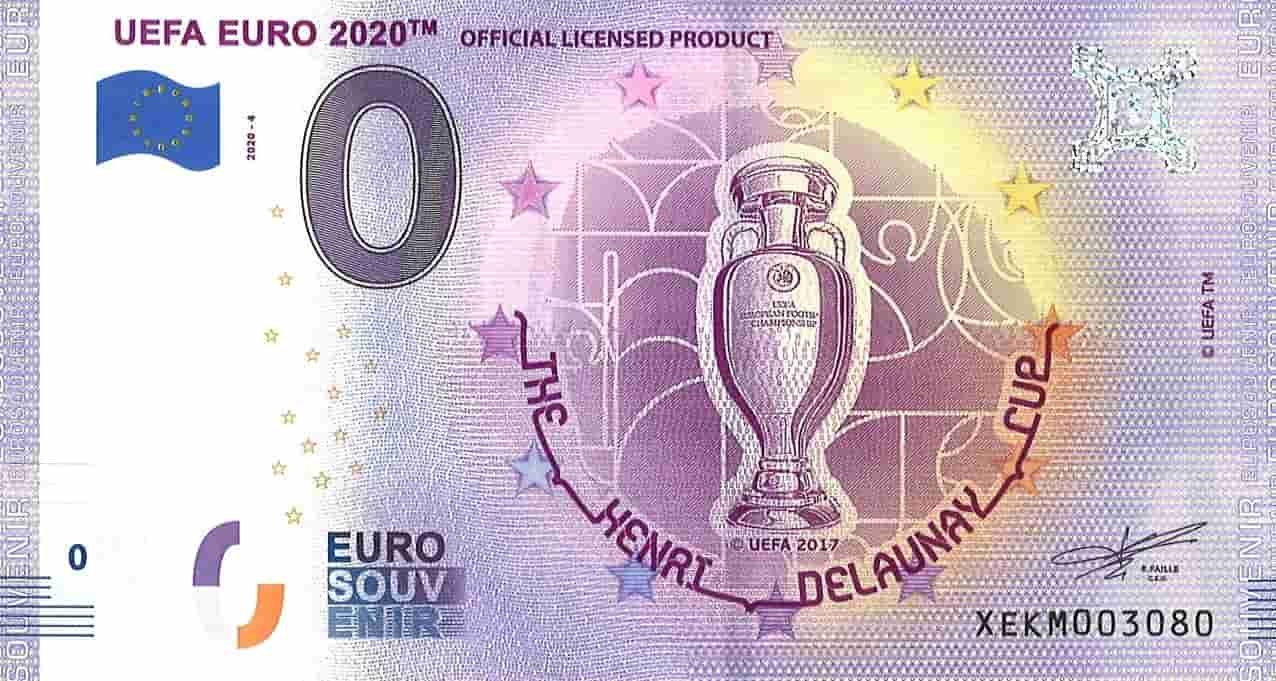0 Euro Banknote
The 0 Euro banknote does exist: except that it is a simple souvenir! with authorized printing by the European Central Bank (ECB). An original invention by Richard Faille, a clever creator who had already had the idea, 18 years ago, of souvenir medals developed with the Monnaie de Paris. Medals sold in most major tourist sites, and of which nearly 60 million copies have already been sold.
He intends to repeat the feat with this ticket, which will be available in 100 major French tourist sites from April 1, 2015 (the Eiffel Tower, the Arc de Triomphe, the Château de Chambord, Mont Saint-Michel, etc. ). The ticket will be sold, like the medals, in vending machines, at the price of 2 Euros.
As the print is strictly limited, don’t miss the great pleasure of collecting 0€ for investment!
Richard Faille announces that he will offer 100 different tickets each year. Banknotes with the same characteristics as real banknotes, but without face value. Banknotes that could quickly become new collectibles.
Numismatic value (currency collecting activities)
The first remarkable banknote is a banknote including an error, the SARLAT 2015, called the “6 geese of SARLAT” by collectors. The model requested had to include the design of three geese. The first draw contained tickets showing 6 geese, which did not conform to the design of the ticket on the proof.
The series was returned to the printer’s trust, except for a bundle of 1,000 notes which had been opened and therefore could not be taken back. These tickets were then sold by the tourist site at a price of €5 each.
Read also: Money Management | 6 methods of position management | One of your priorities in trading
The 2015 Arc de Triomphe banknote is also highly sought after by collectors. It is one of the first tickets produced and many have been purchased by foreign tourists leaving very few on the French market. Four of them were sold on Ebay in 2018 at prices between 179 and 200 Euros. The record is currently held by a German banknote, representing the Duisburg stadium, which was acquired for the sum of 1,000 Euros during a private sale.
Spectacular fun to collect 0 Euro
It is not without reason that 0 Euro souvenir banknotes are reminiscent (similar to) of real banknotes. They are printed in offset with numerous iridescent shades, contain microstripes and text, security backgrounds, a hologram and ink visible under UV.
They also have tactile marks and an individual serial number. As with government banknotes, they also include information about the country of issue and the printer.
Read also: E=MC2 | How did Albert Einstein found the E=mc² formula?

On January 1, 1999
Did you know ? On January 1, 1999, the single European currency officially entered the financial markets. It therefore only had a virtual reality for European citizens until its official launch on January 1, 2002, which millions of Europeans transformed into a success.

Value increases over time
0 Euro banknotes continue to grow in popularity and importance with collectors across the world. It is often said that what is rare is expensive. It explains the exorbitant prices of these banknotes that is not very present on the market.
To sum up, this concept measures “the individual satisfaction obtained by the very last consumed unit of a good”. Thus, if we take the example of the consumption of a glass of water – in case of great thirst – the first glass has an extremely high marginal utility, since it quenches the drinker, while the marginal utility of subsequent drinks only decreases, until it becomes zero or negative (in the event of an overdose).
With such an example, we realize that it is indeed the rarity of the good that has given it most of its value.
By making these types of observations, the marketing departments of companies have therefore found more than one trick up their sleeve to increase prices. The best known technique is, without doubt, that of artificial scarcity. By marketing a small number of units of a good, a company can thus hope to sell them at a high price. This explains the existence of “limited editions” (such as “collector’s” boxes, for example).
However, for a “something” to sell for a high price, it must first find a buyer.
Scarcity (shortage) or not, the question of demand is therefore fundamental. And to sell, buyers must perceive a utility, or at least an interest in what is offered to them. A common-sense principle that explains why square-wheeled bikes don’t sell for that much!
Sources: PinterPandai, Banknote World
Photo credit: PinterPandai (CC BY-SA 4.0)



